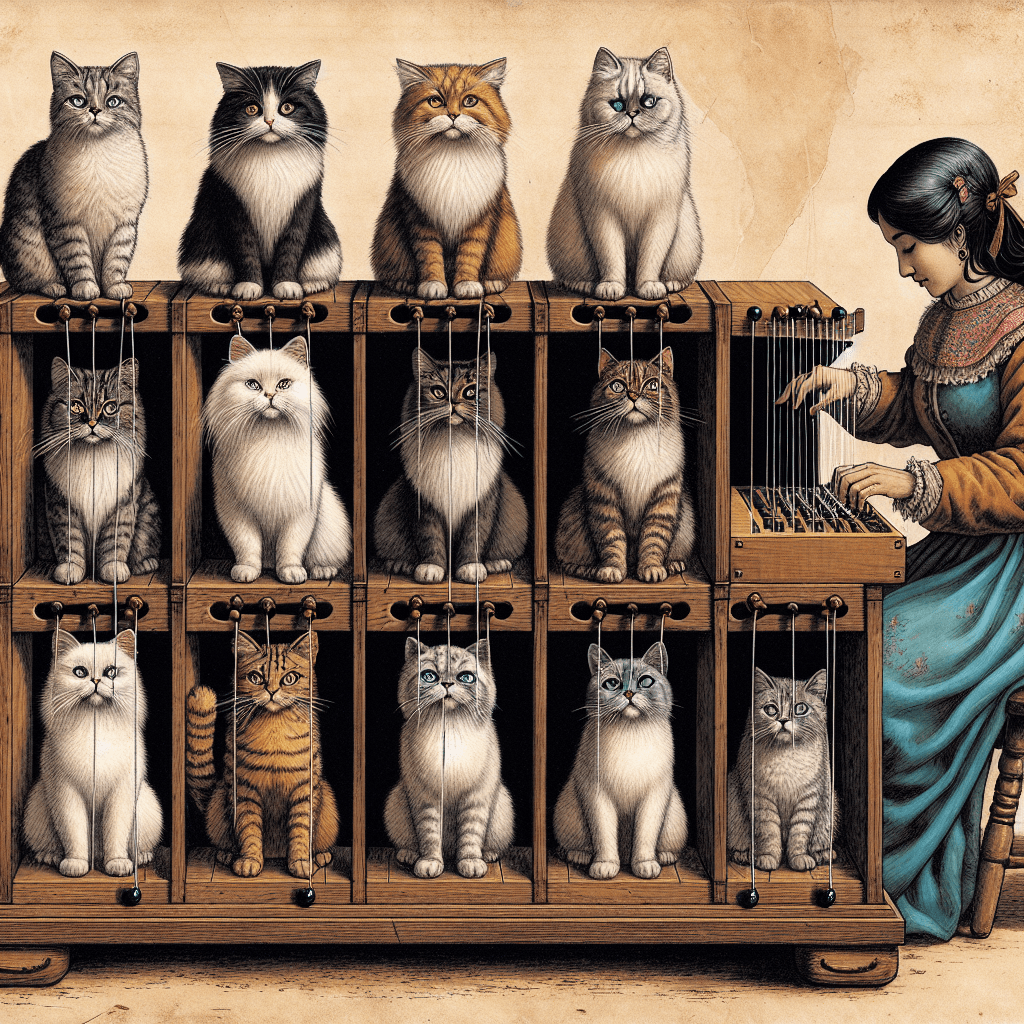Why were cats once arranged in a box to be played as a musical instrument
It sounds like a macabre myth, but for a brief, bizarre period in history, the world's cruelest instrument was designed to jolt a monarch from melancholy using a symphony of feline shrieks.


Too Long; Didn't Read
TLDR: The cat organ was a bizarre historical concept, likely never real, where cats were arranged by meow-pitch and their tails were pulled by keyboard keys. Its supposed purpose was to cure a prince’s melancholy through the sheer shock and absurdity of the cruel instrument.
The Katzenklavier: Why Were Cats Once Arranged in a Box to be Played as a Musical Instrument?
Have you ever listened to an orchestra and thought something was missing? Perhaps a certain... feline quality? While it sounds like a bizarre fantasy, the concept of an instrument powered by the cries of live cats is a real, albeit horrifying, footnote in history. Known as the "cat organ" or, in German, the Katzenklavier, this device represents one of the strangest intersections of music, medicine, and cruelty ever conceived. This post delves into the strange history of the Katzenklavier, exploring its proposed design, its shocking purpose, and whether this grotesque instrument was ever truly built.
Unpacking the Bizarre: What Was the Cat Organ?
The cat organ was not an instrument designed for melodic pleasure in any modern sense. Its description is the stuff of nightmares, and it's important to understand its mechanics to grasp its purpose. The concept, most famously detailed by the 17th-century German scholar Athanasius Kircher in his work Musurgia Universalis (1650), involved the following design:
- A number of live cats were confined in a row within a long box, with their heads and front paws sticking out.
- The cats would be selected and arranged according to the natural pitch of their meows, from a low-pitched growl to a high-pitched yowl.
- Their tails were secured beneath a keyboard-like mechanism.
- Each "key" was connected to a sharp nail or spike positioned directly over a cat's tail.
When a musician pressed a key, the corresponding nail would prick the cat’s tail, causing it to cry out in pain at its specific pitch. A skilled (and heartless) player could theoretically produce a "melody" from the sequence of pained shrieks.
A Cure for Melancholy? The Origins and Purpose
So, why would anyone invent such a monstrous device? The answer lies not in the pursuit of beautiful music, but in early, and often brutal, psychological therapy. The primary purpose of the cat organ was to shock a person out of a state of deep melancholy or depression.
The earliest known account comes from the historian Juan Calvete de Estrella, who described a procession in Brussels in 1549 to entertain Prince Philip II of Spain. The procession included a bear playing the bagpipes and, most shockingly, a cat organ mounted on a chariot. The story goes that an instrument of this nature was used to treat a prince who had fallen into a catatonic state. The sight and sound of the instrument—the sheer absurdity and horror of cats "singing" in agony—was believed to be so jarring and unexpected that it could jolt the patient out of their stupor and force them to laugh or otherwise re-engage with the world. In an era before modern psychiatry, such "shock treatment" was considered a plausible, if extreme, form of therapy.
Fact or Horrifying Fiction? The Debate Over the Katzenklavier
This leads to the crucial question: was the cat organ a real instrument or just a conceptual oddity? The historical record is thin, and there is no surviving physical evidence—no schematics, no museum pieces—to prove one was ever built and used consistently.
Most historians today believe the Katzenklavier existed primarily as a thought experiment or a satirical concept. Athanasius Kircher, who described it in detail, was a polymath known for documenting a vast array of inventions, both real and imagined. His work was an encyclopedia of possibilities, not necessarily a catalog of existing devices. The cat organ may have been included as an extreme example of acoustic principles or as a commentary on the bizarre lengths to which courtly entertainment could go.
However, the 1549 account from Brussels suggests that at least one such instrument might have been constructed for a specific, singular event. It was likely a one-off curiosity designed for maximum shock value, not a standard musical instrument found in any orchestra. It was never intended for composition, only for effect.
Conclusion
The cat organ, or Katzenklavier, remains one of history's most disturbing and fascinating concepts. It was an instrument born not from a love of music, but from a primitive understanding of the human psyche and a profound disregard for animal welfare. While its physical existence is debated, its place in the historical imagination is secure. It serves as a grim reminder of a time when the lines between entertainment, medicine, and cruelty were blurred. Ultimately, the story of the cat organ is a powerful testament to how far our understanding of both mental health and animal rights has evolved, leaving this bizarre invention safely in the pages of history.
More Articles

Why do many jet engines have a white spiral painted on their center cone?
That mesmerizing spiral on a jet engine isn't just a quirky design—it's a simple but brilliant visual trick that serves as a life-or-death warning to ground crews.

Why is the Statue of Liberty green instead of copper-colored?
She didn't always have that famous green glow; discover the 30-year chemical reaction that transformed Lady Liberty from a shiny copper statue into the iconic symbol we know today.

Why do some animals deliberately eat clay or dirt?
From parrots to primates, eating dirt isn't a strange mistake but a calculated survival strategy with surprising medicinal benefits that can neutralize deadly poisons.